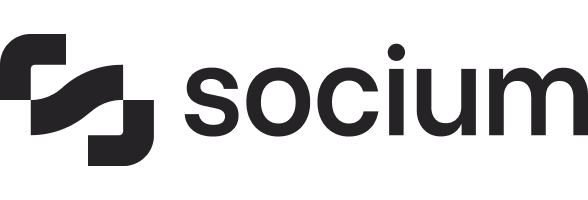Human-Centered AI: Meaningful Innovation in Community Healthcare
In today's rapidly evolving technological landscape, we often equate innovation with cutting edge technologies requiring substantial investment. My recent talk at the 13th annual Illinois Free and Charitable Clinics conference focused on a different perspective – one that places human connection at the center.
The Promise of Human-Centered AI
AI is democratizing. It’s compressing vast amounts of human knowledge into accessible tools. As Bill Gates has noted, "The development of AI is as fundamental as the creation of the microprocessor, the personal computer, the internet, and the mobile phone." But AI's true potential in healthcare lies not in its complexity, but in how it addresses genuine challenges faced by patients and practitioners everywhere.
Technology should simplify and streamline more predictable processes, freeing humans to be more fully present in the moments that matter most. AI excels at what humans find draining: data collection, pattern recognition, and synthesizing information across systems. Yet, it falls short in precisely the areas where humans shine: deep understanding, emotional intelligence, adapting to unexpected change, and creative thinking needed to address complex social drivers of health.
This shift gives us more space for what we refer to as "humaning": the vital work of human connection, empathy, and creativity that's at the heart of community healthcare.
Redefining Innovation in Community Healthcare
Those serving traditionally underserved populations often have the greatest need for efficiency enhancing tools, yet face the steepest barriers to adoption. For many community clinics, expensive technologies and complex systems simply seem out of reach
But what if we redefined innovation to include creative problem solving using existing resources? What if we celebrated the nurse who devises a new patient education approach or the clinic administrator who restructures appointment scheduling to reduce wait times? These grassroots innovations may not capture headlines, but they transform care delivery where it matters most.
A Framework for Meaningful Innovation
Based on these examples, we’ve developed a framework for meaningful innovation that puts people at the center.
Meaningful Innovation Framework
Human-centered + Low Tech + High Impact
At its heart lies humanity itself, surrounded by four interconnected activities:
Listen: Understand human needs before designing solutions
Iterate: Experiment with accessible solutions
Embed: Integrate into systems and workflows
Share: Tell stories and spread learning
These activities are supported by crucial enabling elements:
Community: Drawing on collective wisdom
Resources: Using what you already have
Operations: Making it sustainable
Data: Measuring what matters
Why Community Clinics Are Positioned to Lead with AI
Free and charitable clinics have a significant advantage when implementing AI: nimbleness. Without the constraints of complex reimbursement systems, these organizations can listen and respond to needs more quickly than larger healthcare institutions.
Organizations that excel with AI aren't necessarily the most technologically advanced. They're the organizations that have mastered human-centered practices first:
When you already listen effectively, you collect better data for AI tools
When you're accustomed to iteration, AI integration happens gradually with continuous feedback
When you focus on workflow integration, AI enhances rather than disrupts
When knowledge sharing is valued, transparency around AI becomes natural
Real World Examples of Human-Centered Innovation
Throughout my talk, I highlighted several examples of human-centered innovation in action:
Rosalind Franklin's Interprofessional Community Clinic
A student led clinic with 300+ volunteers leveraged Google Suite to track patient voicemails and coordinate care. Their approach focused on maximizing existing resources and creating sustainable systems that outlived individual student volunteers. Recently, they've begun using AI tools like ChatGPT to draft policies and procedures, a natural evolution of their human-centered foundation.
Serving individuals experiencing homelessness, they developed context specific data collection strategies using Excel to track encounters from their Health Outreach Bus and street medicine teams. Their approach tailored data views for different stakeholders—from board members to frontline staff—while maintaining a deeply human perspective that treats data as representations of people and their stories.
When COVID hit, they quickly implemented telehealth like many other clinics. However, when they noticed decreased no show rates, they dug deeper to understand why, discovering barriers like childcare costs and lost wages from travel time. This led to creating micro sites within existing community organizations where patients could receive care, get labs drawn, and access other social services in one location.
Practical Starting Points
Start small with these concrete steps:
Create a one question exit survey to understand patient experiences
Digitize one paper form that causes friction
Document one process that currently "lives in someone's head"
Create a new way to communicate successes, like a "data point of the week"
The Path Forward
We're at the beginning of figuring out how to integrate AI meaningfully into healthcare. What's exciting is that the human-centered approaches already being used by free and charitable clinics provide the perfect foundation for this work.
By maintaining a focus on human needs, starting small, learning quickly, and building on validated foundations, community clinics can lead the way in developing healthcare innovations that truly serve their missions and communities.
In the end, meaningful innovation isn't about the most sophisticated technology. It's about understanding human needs first and then finding the right tools to address them. Free and charitable clinics, with their deep community connections, nimble approach to problem solving, and unwavering focus on addressing human needs, are uniquely positioned to lead this human-centered innovation revolution.

